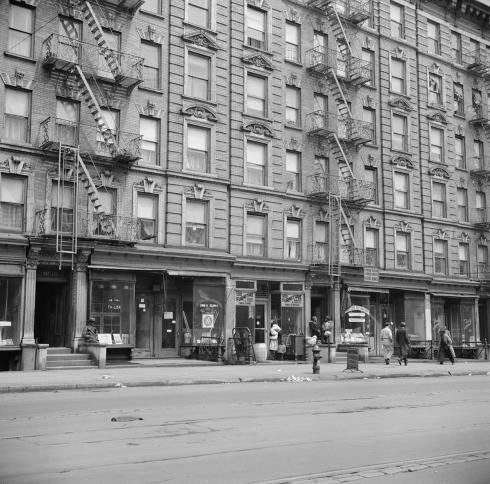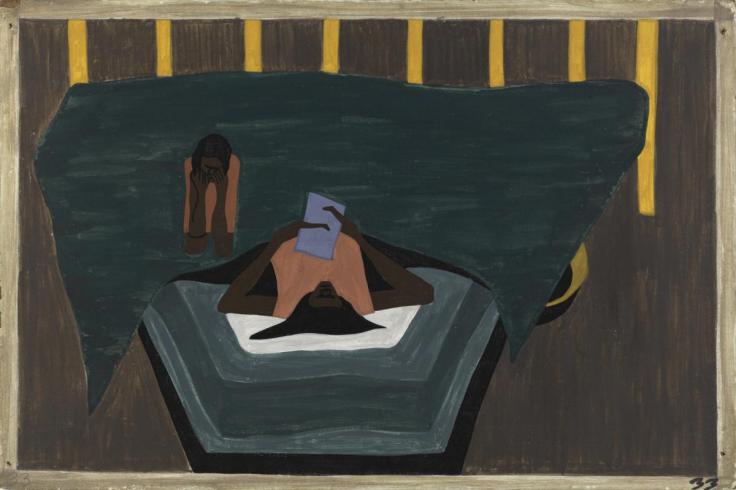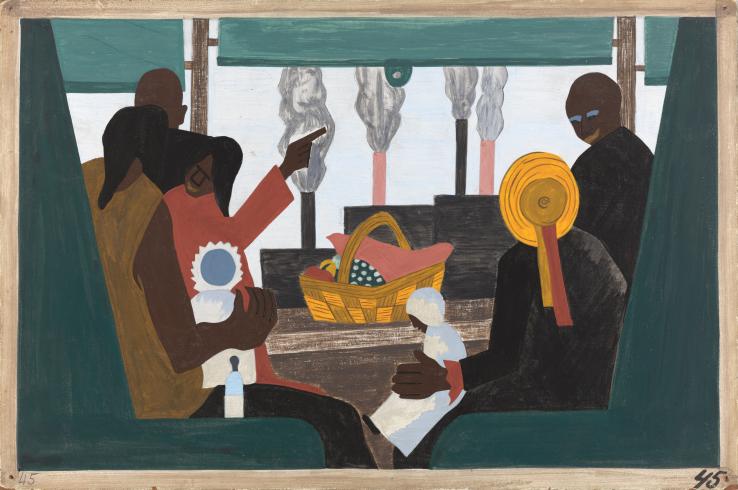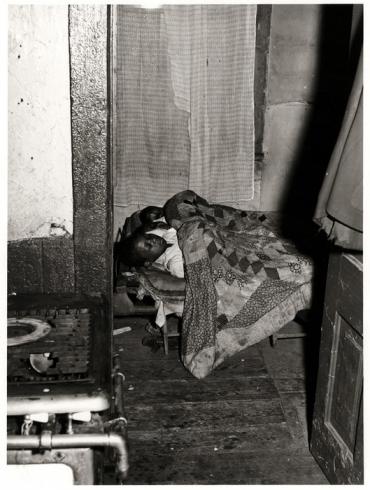Life in the North
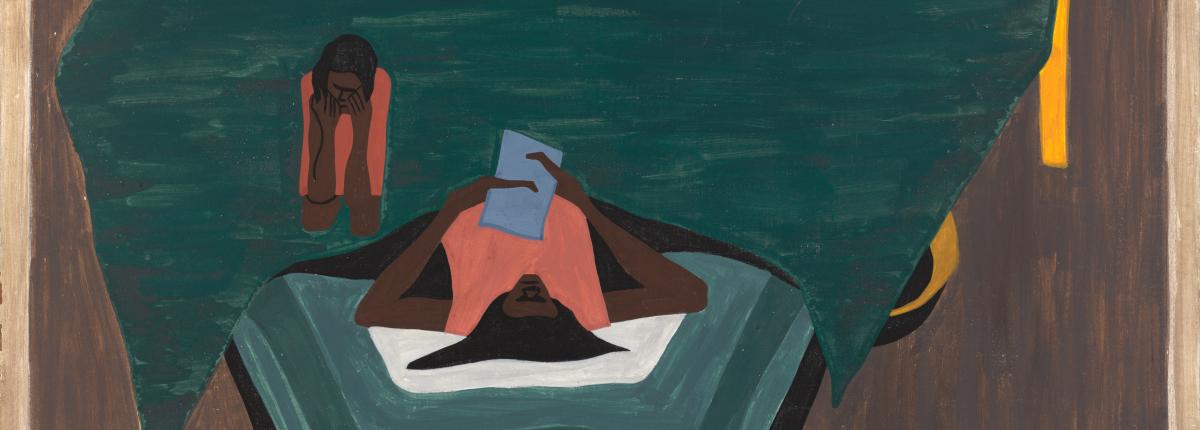
Part 1: The Great Migration
Introduce:
- Read aloud The Great Migration: Journey to the North by Eloise Greenfield. This book is a collection of poems and collage artwork that details the experience of one family’s move from the South to the North, during the 1910s to 1930s, in search of a better life. This period of time was known as the Great Migration.
- After reading the story to students, ask the following questions:
- Why are the Boy and Girl migrating North?
- Why is the Woman happy to leave the South?
- What kind of transportation did people use to migrate North?
Part 2: Exploration
Analyzing Art:
- Explain to students that they are going to learn about what life was like in the North based on panels from Jacob Lawrence’s Migration Series.
- Groups of 3-4 students will study the following panels from The Migration Series: Panels no. 31, 38, 47, 49, 51, 54, 58 (without captions).
- The captions have been removed so that students can make their own interpretations about what life was like.
- Students should first IDENTIFY things they see in the panels:
- What do you notice about what the people are doing in the panels?
- What might the actions of the people tell us about life in the North?
- What other objects do you notice in the panels?
- What might these objects tell us about life in the North?
- In a quick share out, ask a few students to share what they think life was like in the North for the migrants based on the panels.
Part 3: Life in the North
- Explain to students that they will write a short paragraph based on their discussions and analysis of the panels that answers the following question:
- What do you think life was like in the North for the migrants? Explain your opinion based on the panels you studied.
- After students write their paragraphs, have them return to the panels and read the captions: The Migration Series: Panels no. 31, 38, 47, 49, 51, 54, 58 with captions.
- Students should then go back to their paragraphs and decide if there is anything they want to revise based on reading the captions. Students should revise their paragraphs as necessary.
- On chart paper, create a list of what life was like in the North based on student responses.
- EMPATHIZE with the migrants: reflect through a class discussion about the positive and negative aspects of life in the North during the Great Migration.
Additional Context
Lesson Context
The ambitious 60-panel series by Jacob Lawrence portrays the Great Migration, the flight of over a million African Americans from the rural South to the industrial North following the outbreak of World War I. By Lawrence’s own admission, this was a broad and complex subject to tackle in paint, one never before attempted in the visual arts. The series captures themes of struggle, hope, triumph, and adversity.
When migrants arrived in the North they sought family and community as a way to enmesh themselves in their new surroundings. Many migrants gravitated towards people who were from the same region in the South, and predominantly black neighborhoods emerged, such as Harlem in New York and the Southside of Chicago.
Adjusting to city life was not easy. Overcrowded conditions, the added expense of urban living, and new social mores led to many disappointments. For some migrants, the struggle was just as difficult as it had been in the South. They were faced with scarce and unsanitary housing and new forms of discrimination.
Key Terms
Great Migration: In the Southern US, African Americans endured blatant discrimination and segregation as part of Jim Crow laws, as well as poor economic conditions. In the hopes of improved living and working conditions, hundreds of thousands of African Americans migrated from the South to the North, in particular to Chicago, Los Angeles, Detroit, Philadelphia, and New York, between 1916-1940. The Great Migration happened in two major waves: the first one being from 1916-1940 and the second one from 1941-1970.
